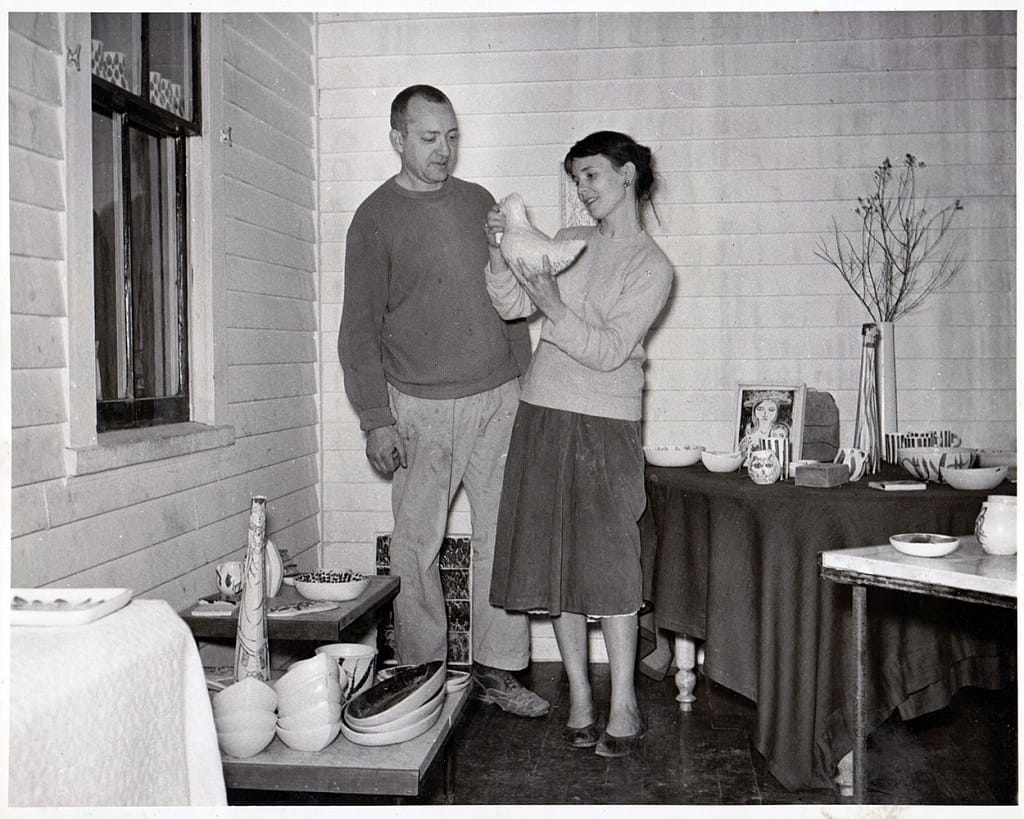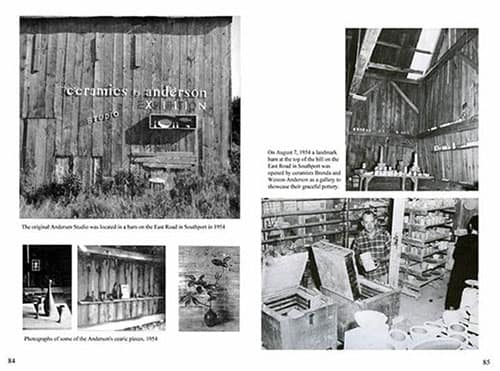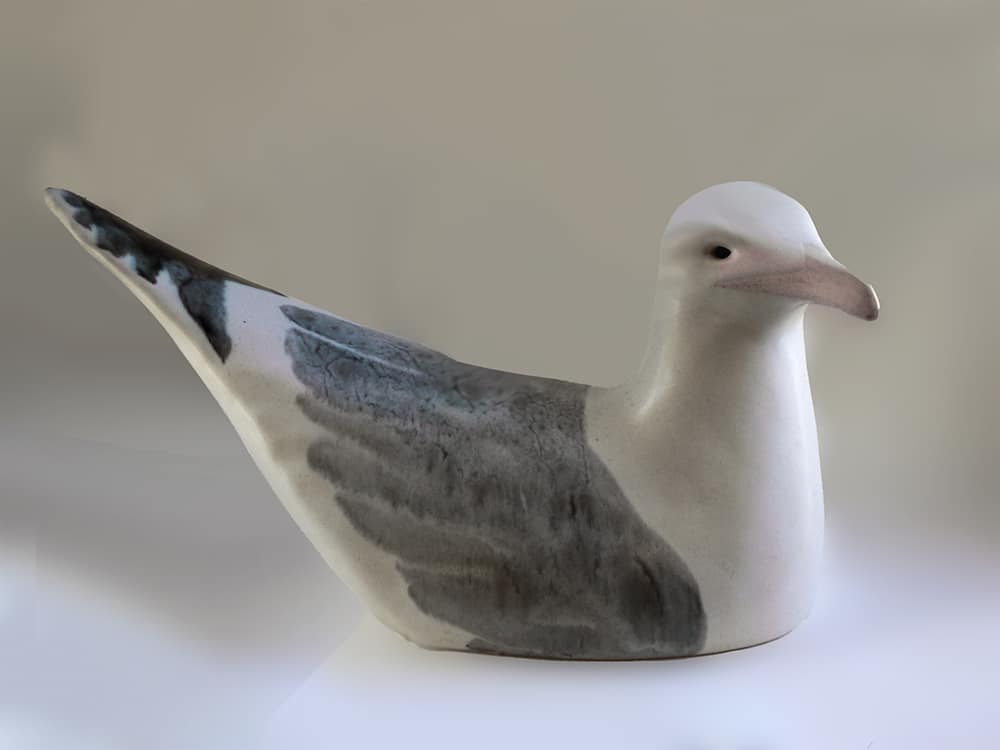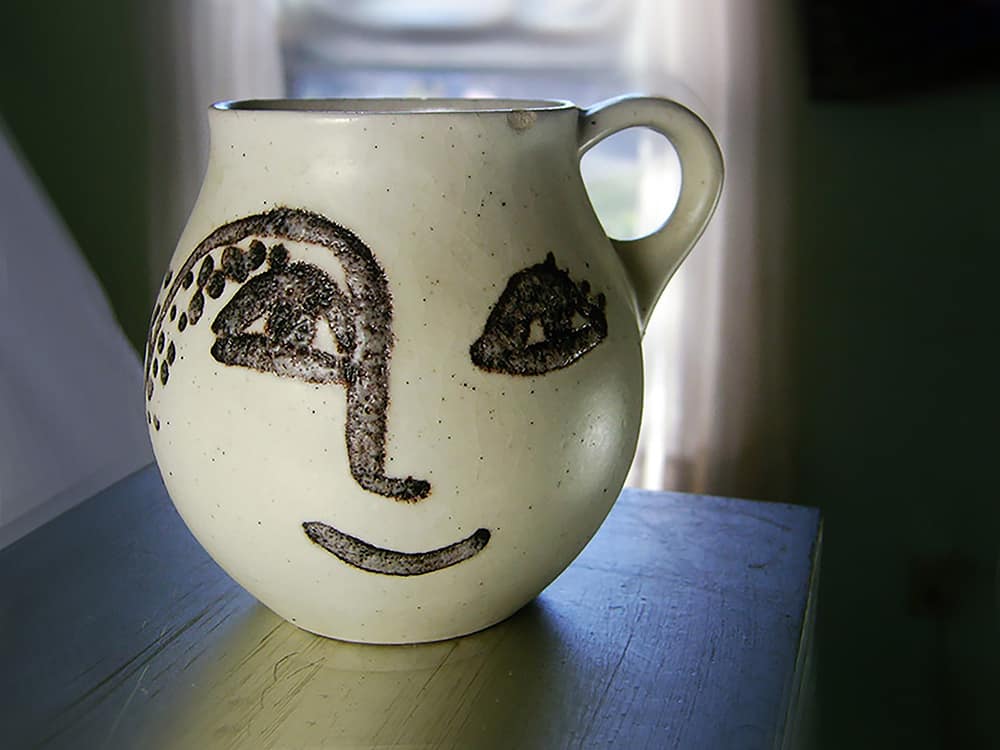

I was raised in a ceramic business in the home, which was different from its surroundings, making me and my siblings outsiders in the classroom environment. When school closed and summer commenced, an alternate reality emerged, a world in which my family’s art was sought after by a wide range of humanity. I felt welcomed by the foreigners and was an outsider among local peers. Later, when I left home for NYC, circa 1966, I found myself surrounded by welcoming peers, a difference between night and day. It was New York City at the pinnacle of the flower power era, when Greenwich Village was wall-to-wall youth culture
As you can imagine, this formulated a peculiar psychology, so strange that even I didn’t recognize it!
A while ago, a high school acquaintance told me that what our family did was thought very unusual when we moved into the neighborhood and put out a sign and ran a business from our home.
It was my job to watch for customers while walking the beams of the 200-year-old barn where the swallows flew through an open space in the roof. When visitors arrived, I jumped from the rafters and ran down the hill to alert my parents. It was an era of personal freedom, a choice made by my parents when they moved from a Levittown-style community in Ohio to Maine. In their time, my parents chose the path less travelled, which in those days was something that could be done in Maine. Then they carved an alternate path beyond the medium of plastics to design and produce handmade ceramics.

To Maine in 1952

Handcrafted slip cast production, done individualisticly, is still the path less travelled, an alternative to the mainstream, which is going the route of pre-fab manufacturing of everything.


In 1952, Andersen Design was born out of a unique philosophy, focused on creating a handmade product affordable to the middle class. The handmade making process was the ground out of which our art grew, literally the ground where the raw materials of the ceramist are found.
By the time I arrived in NYC in 1966. Marshall McLuhan was as popular as the happy face. McLuhan’s time was the age of electricity. McLuhan held that most people perceive the content and not the medium. He identified those who can see the medium as artists, in whatever their chosen field of practice. Today, they are called visionaries. In The Medium Is The Message, McLuhan wrote: “The artist can correct the sense ratios before the blow of new technology has numbed conscious procedures.“
Today, we live in the digital age with an ever-accelerating rate of change. Entrepreneurs become multi-billionaires when they perceive the medium and how it will change the world. The medium is the messenger of change, and today, part of the change the new medium has brought about is the billionaire syndrome, accompanied by the widening divide between classes, which is not only the content of the digital medium but a new political medium as well, producing its own content. written in the statutes instituting sequential order in conformity with the will of global masters.
Every new medium, be it electricity or data, produces new processes and replaces old ones. Ceramic making is a process, rooted in antiquity, enduring through ever-new mediums without changing its essence. One could be tempted to say that my parents resisted change when they chose the handcrafted ceramic process, but there was no change to resist in the making of ceramics. It is an art and a technology that has existed since the dawn of civilization.
“Percussed victims of the new technology have invariably muttered clichés about the impracticality of artists and their fanciful preferences. But in the past century, it has come to be generally acknowledged that, in the words of Wyndham Lewis, “The artist is always engaged in writing a detailed history of the future because he is the only person aware of the nature of the present.” Knowledge of this simple fact is now needed for human survival. The ability of the artist to sidestep the bully blow of new technology of any age, and to parry such violence with full awareness, is age-old. Equally age-old is the inability of the percussed victims, who cannot sidestep the new violence, to recognize their need for the artist. To reward and to make celebrities of artists can also be a way of ignoring their prophetic work and preventing its timely use for survival. The artist is the man in any field, scientific or humanistic, who grasps the implications of his actions and of new knowledge in his own time. He is the man of integral awareness,” Marshal McLuhan, The Medium is the Message, 1964
McLuhan defines the medium as extensions of our bodies and our senses, be it an iPhone or a brush. The handmade process removes layers of extensions and connects to the continuity of human experience through time. All great civilizations have been great periods of art and culture, which have included ceramics. The making of ceramics engages the maker in a meaningful medium, not merely the content emerging from the medium in the form of objects, but the making process itself, which is at once the medium and its content.

In 1966, Andy Warhol was doing production as an art form and becoming the darling of the New York art world. Warhol’s studio, known as the Factory, was a den of iniquity, where silkscreened art of soup cans and portraits of celebrities were produced. The Factory was both a culture and a handmade work process. For its inner core and circle of followers, an urban business in a home away from home.


While commercialism reflects collectivism, the handmade forms produced by Andersen Design call out to the individual. Collectors collected Andersen as an expression of their personal taste, not as a trend, borne out by the fact that the market appeal has attained classic status, enduring through time.
Back in the urban environs of New York, my parents’ peers of a former time were designing for companies with factories that produced the designs. Later, those factories would relocate to countries with low-wage labor markets, while Andersen Design’s production remained in America and successfully competed against foreign-made imports.
Andy Warhol’s art factory was inseparable from the human culture that inhabited it. Warhol’s factory was an urban extension of a farm, the original business in a home, as much as it was a factory, and so the factory was more than a factory; it was a scene, which brings us back to McLuhan, when he associates the medium as the background. The scene at the factory produced an abundance of creative content, not only silk screen artwork, but music and film, and poetry. Warhol directed other artists to create his works, but he was also involved in a hands-on relationship with the creation of the art, and in that way, Andersen Design and Andy Warhol’s factory are similar concepts. As owners of our own “factory,” we have never stopped being hands-on involved in the process, be we need to work with others to produce a line of over 200 designs, and because producing a line of slip cast ceramics is a very complex process requiring a team, working synergistically together.
Mark Kostabi and Jeff Koons carried on the Warhol art as a production tradition but pride themselves on never touching the artwork produced in their factories. If there is a human culture associated with their productions, it has never reached the cultural notoriety of Andy’s factory. Koons and Kostabi are more like designer-CEOs than artists in the meaning embedded in that identity by McLuhan. They are the sequential followers of Warhol, but at once, as commercial as a soup can, seeing only that art can be produced in a factory, but missing the deeper cultural import of Warhol, who created a farm for a dysfunctional family in the Biggest Apple in the orchard of urbanism. The significant message of Warhol is in the cultural medium he created.









